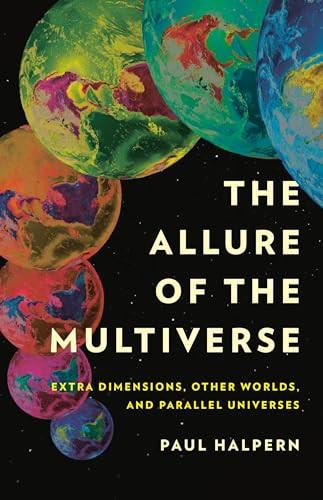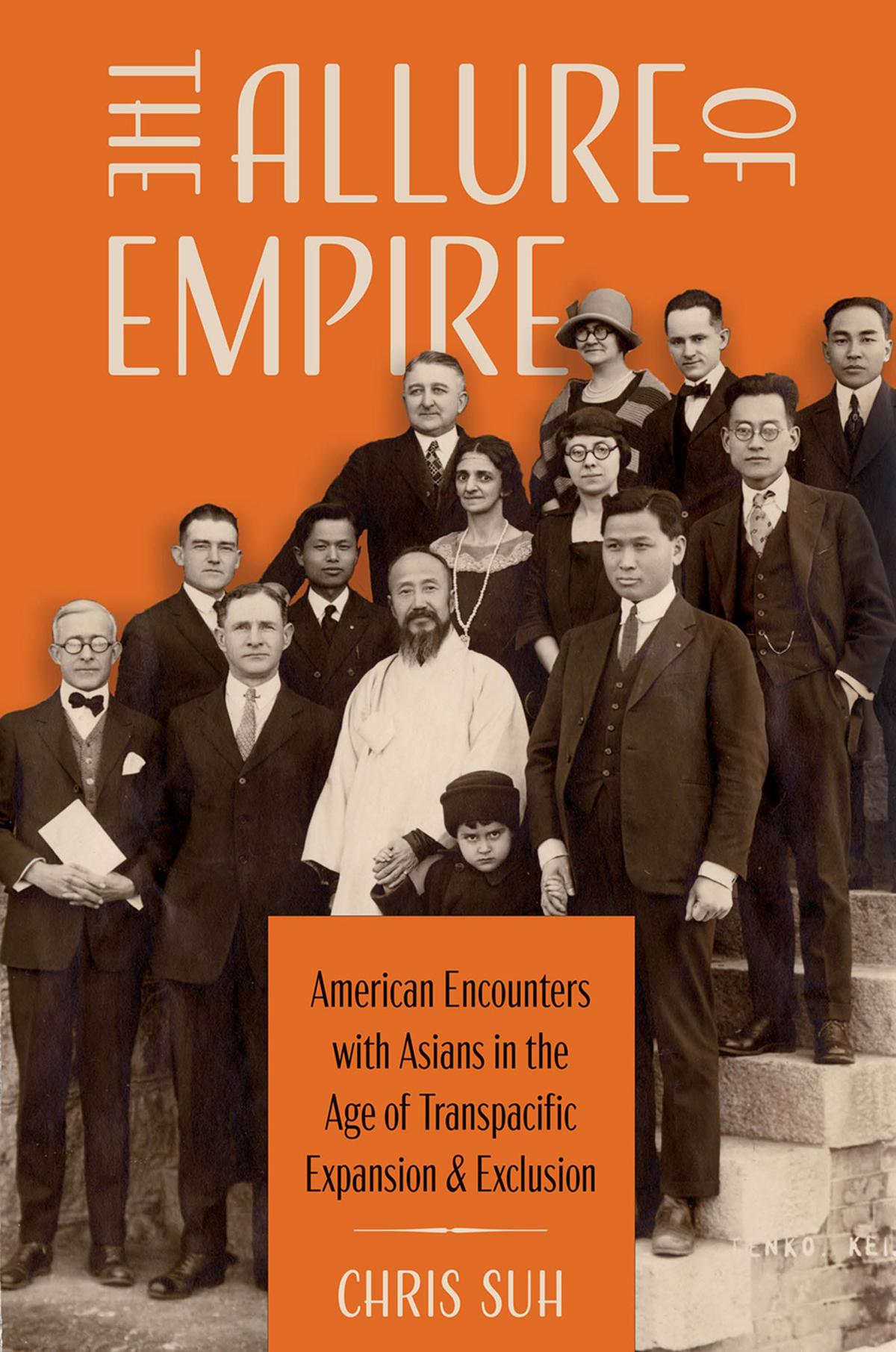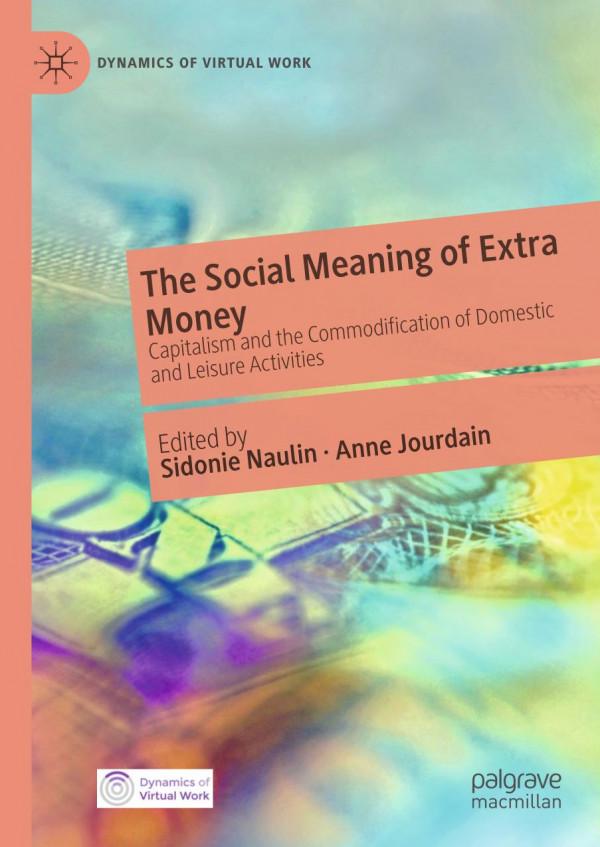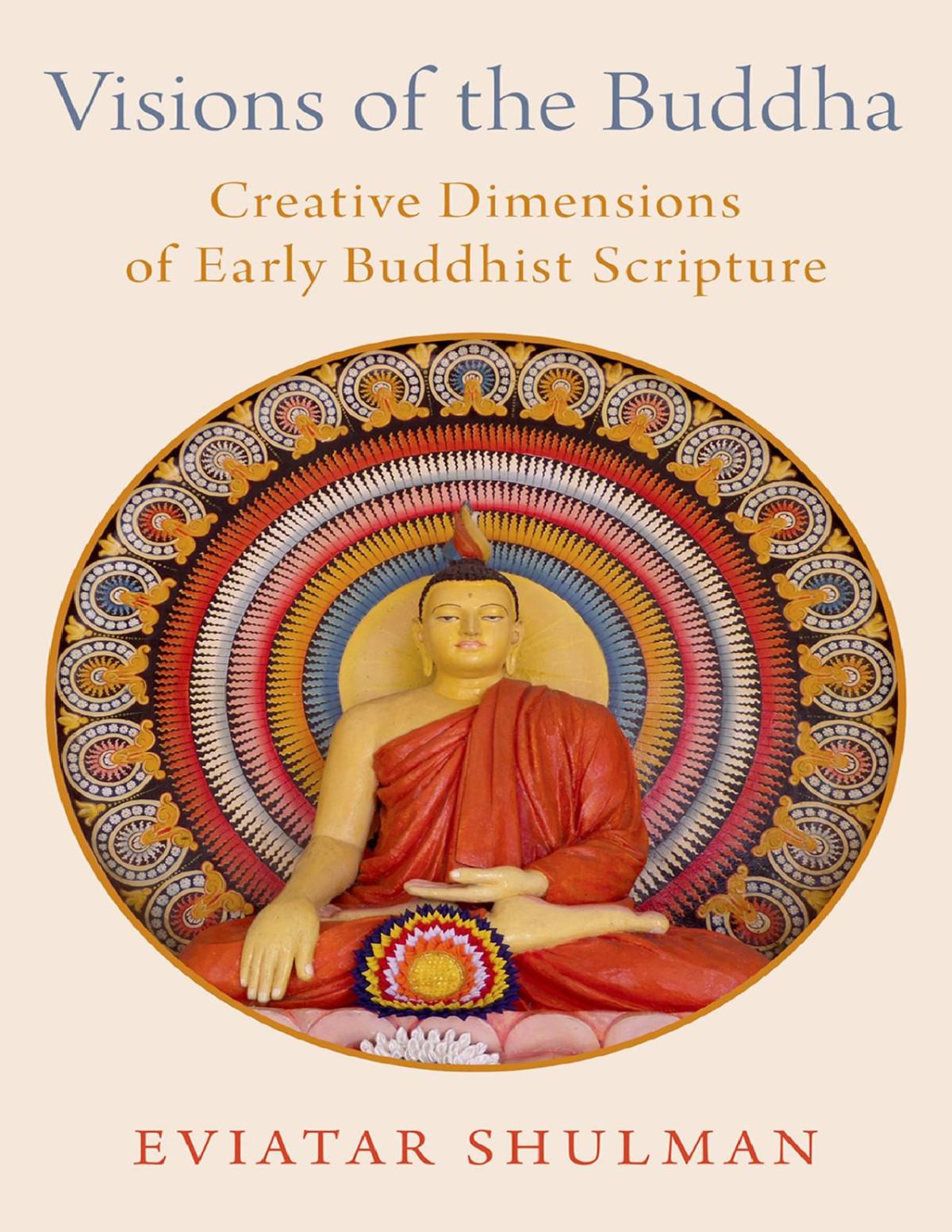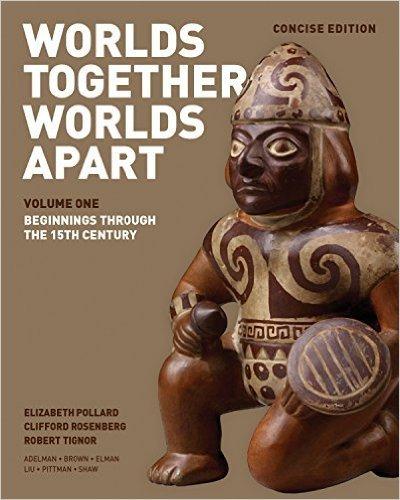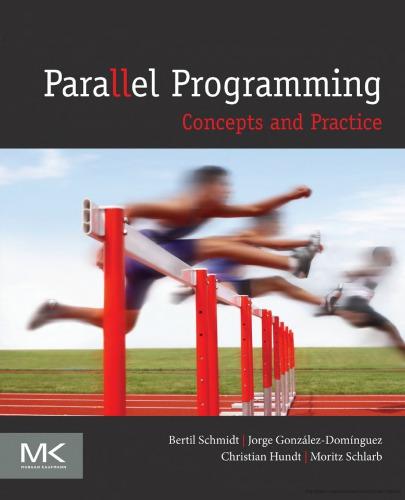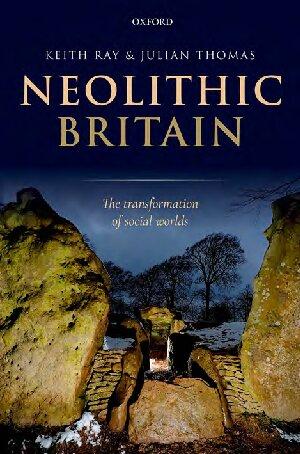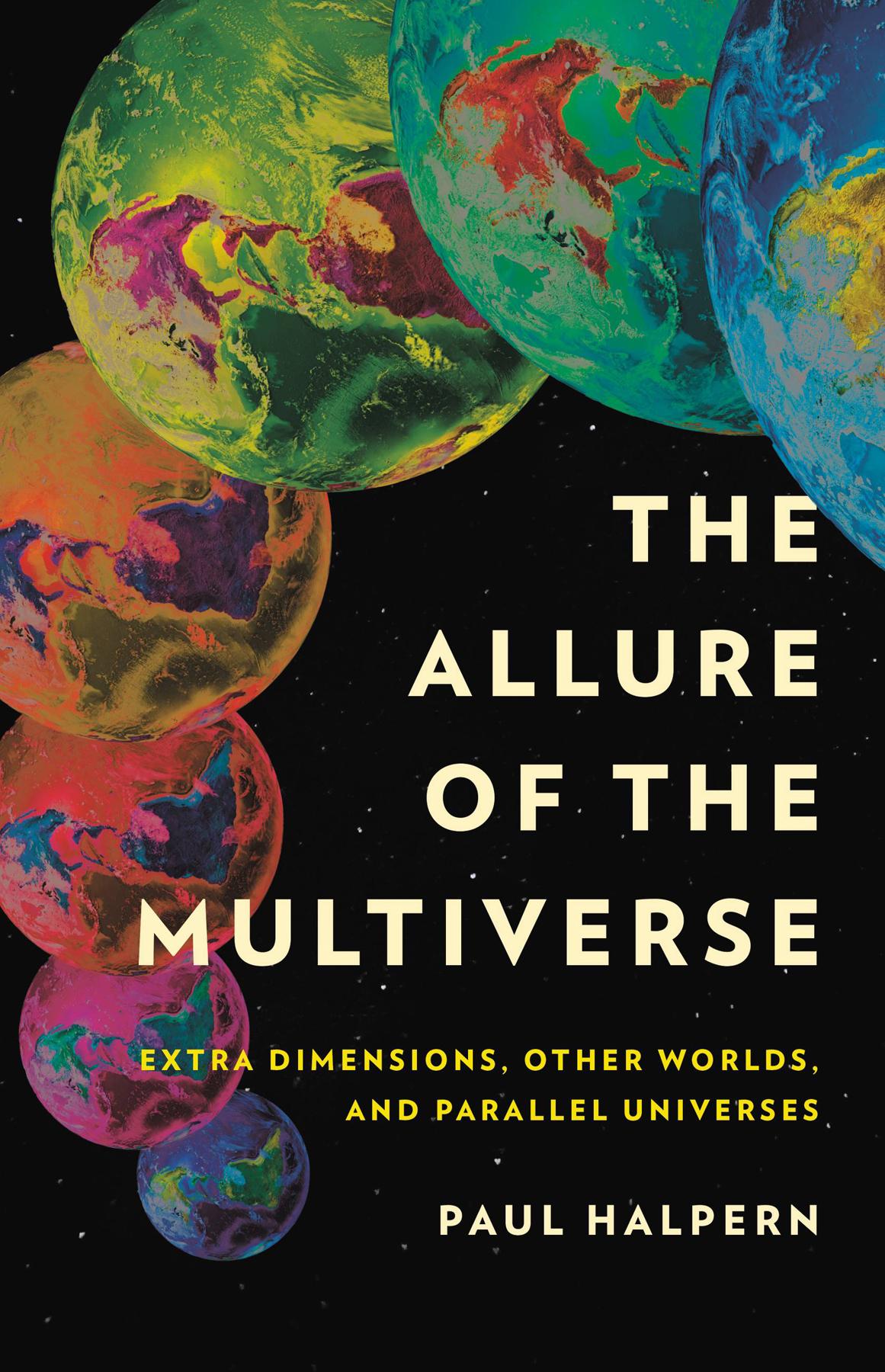the
Visit to download the full and correct content document: https://ebookmass.com/product/the-allure-of-the-multiverse-extra-dimensions-other-w orlds-and-parallel-universes-paul-halpern/
More products digital (pdf, epub, mobi) instant download maybe you interests ...
The Allure of Empire Chris Suh
https://ebookmass.com/product/the-allure-of-empire-chris-suh/
On the Other Shore. The Atlantic Worlds of Italians in South America during the Great War John Starosta Galante
https://ebookmass.com/product/on-the-other-shore-the-atlanticworlds-of-italians-in-south-america-during-the-great-war-johnstarosta-galante/
The Other Side of the River Alda P. Dobbs
https://ebookmass.com/product/the-other-side-of-the-river-alda-pdobbs-2/
The Social Meaning of Extra Money: Capitalism and the Commodification of Domestic and Leisure Activities 1st ed. 2020 Edition Sidonie Naulin
https://ebookmass.com/product/the-social-meaning-of-extra-moneycapitalism-and-the-commodification-of-domestic-and-leisureactivities-1st-ed-2020-edition-sidonie-naulin/
Visions of the Buddha: Creative Dimensions of Early Buddhist Scripture Eviatar Shulman
https://ebookmass.com/product/visions-of-the-buddha-creativedimensions-of-early-buddhist-scripture-eviatar-shulman/
eTextbook 978-0393918472 Worlds Together, Worlds Apart: A History of the World: From the Beginnings of Humankind to the Present (Concise Edi
https://ebookmass.com/product/etextbook-978-0393918472-worldstogether-worlds-apart-a-history-of-the-world-from-the-beginningsof-humankind-to-the-present-concise-edi/
Parallel programming: concepts and practice GonzálezDomínguez
https://ebookmass.com/product/parallel-programming-concepts-andpractice-gonzalez-dominguez/
The Lost Worlds of John Ford Beyond the Western Jeffrey
Richards
https://ebookmass.com/product/the-lost-worlds-of-john-fordbeyond-the-western-jeffrey-richards/
Neolithic Britain: The Transformation of Social Worlds
Keith Ray
https://ebookmass.com/product/neolithic-britain-thetransformation-of-social-worlds-keith-ray/
Copyright © 2024 by Paul Halpern
Cover design by Emmily O’Connor
Cover images © Matis75 / Shutterstock.com; © Wirestock Creators / Shutterstock.com
Cover copyright © 2024 by Hachette Book Group, Inc.
Hachette Book Group supports the right to free expression and the value of copyright. The purpose of copyright is to encourage writers and artists to produce the creative works that enrich our culture.
The scanning, uploading, and distribution of this book without permission is a theft of the author’s intellectual property. If you would like permission to use material from the book (other than for review purposes), please contact permissions@hbgusa.com. Thank you for your support of the author’s rights.
Basic Books
Hachette Book Group 1290 Avenue of the Americas, New York, NY 10104 www.basicbooks.com
First Edition: January 2024
Published by Basic Books, an imprint of Perseus Books, LLC, a subsidiary of Hachette Book Group, Inc. The Basic Books name and logo is a trademark of the Hachette Book Group.
The Hachette Speakers Bureau provides a wide range of authors for speaking events. To find out more, go to hachettespeakersbureau.com or email HachetteSpeakers@hbgusa.com.
Basic books may be purchased in bulk for business, educational, or promotional use. For more information, please contact your local bookseller or the Hachette Book Group Special Markets Department at special.markets@hbgusa.com.
The publisher is not responsible for websites (or their content) that are not owned by the publisher.
Print book interior design by Bart Dawson.
Library of Congress Cataloging-in-Publication Data
Names: Halpern, Paul, 1961– author.
Title: The allure of the multiverse : extra dimensions, other worlds, and parallel universes / Paul Halpern.
Description: New York : Basic Books, 2024. | Includes bibliographical references and index.
Identifiers: LCCN 2023019652 | ISBN 9781541602175 (hardcover) | ISBN 9781541602182 (ebook)
Subjects: LCSH: Multiverse. | Cosmology.
Classification: LCC QB981 .H247 2024 | DDC 523.1— dc23/eng/20231011
LC record available at https://lccn.loc.gov/2023019652
ISBNs: 9781541602175 (hardcover), 9781541602182 (ebook)
E3-20231123-JV-NF-ORI
CONTENTS
Cover
Title Page
Copyright
Dedication
Epigraph
Introduction: When One Universe Is Not Enough
Chapter One: Eternity Through the Stars
Chapter Two: Theories from Another Dimension
Chapter Three: Showdown in Hilbert’s Hotel
Chapter Four: Order from Chaos
Chapter Five: Burgeoning Truths
Chapter Six: Tangled Up in Strings
Chapter Seven: Seasons of Rebirth
Chapter Eight: The Time Travelers Party
Conclusion: The Reflecting Pool and the Sea
Acknowledgments
Discover More
Further Reading
Notes
About the Author
Also by Paul Halpern
DedicatedtothememoryofDavidZitarelli,anoutstanding teacher,mentor,andhistorianofmathematics
Explore book giveaways, sneak peeks, deals, and more.
Tap here to learn more.
If the doors of perception were cleansed then everything would appear to man as it is: Infinite.
For man has closed himself up, till he sees all things thro’ narrow chinks of his cavern.
William Blake (TheMarriageofHeavenandHell)
I think we have enough tsuris with one Verse.1
—Stanley Deser,
award-winning theoretical physicist
INTRODUCTION
When One Universe Is Not Enough
In a society with omnipresent cameras, seeing is an essential part of believing. Messages are stamped and certified with the watermarks of pictorial proof. “Pics or it didn’t happen,” states a popular meme. In these days of photographic manipulation not every image is genuine, but authentic photos continue to convey a certain legitimacy.
No wonder the launch of the James Webb Space Telescope (JWST) on Christmas Day 2021 and its ever-growing cache of stunning images released since July 2022 have proven so exciting. Faint, distant galaxies from the nascent era of the universe, only several hundred million years after the Big Bang, have suddenly come to life. Nurseries for stellar formation sparkle and glisten like dew-speckled, blazing wildflowers. No simulations or theoretical equations could match in the public eye such vivid photo evidence— albeit converted from infrared radiation to colorful visible portraits. Space pics, and it did happen!
Given the desire for visualizable signals—by telescope or other means—to cement reality, physicists’ growing interest in a multiverse —including unobservable enclaves—seems, at face value, to make little sense. The time-tested scientific method requires experimental verification. Yet the very idea of a multiverse—supplementing the discernable universe with realms beyond direct detection—seems antithetical to the goal of testability. Would any detective draw a conclusion about a possible crime if there were absolutely no
possibilities for gathering evidence, such as access to the scene, eyewitness testimony, and so forth?
Moving beyond the potentially observable, therefore, which multiverse theories suggest, seems a radical step, not to be taken lightly. Why not just stick to the measurable, and map out the recordable using powerful instruments such as the JWST? Undoubtedly, within the bounds of telescopic observation, there remains so much out there left to explore.
By instinct and tradition, humankind has sought to understand its environment as thoroughly as possible—to ward off dangers, embrace beneficial opportunities, and make helpful predictions. Charting the world—and, beyond that, the cosmos—out to the very frontiers of detection, following the pathways of the great voyagers, has been a key part of our heritage. By carefully documenting what we find, we strive to fill in the gaps in our comprehension. Maps, once complete, offer the comfort and benefits of knowing all that is out there.
Yet, paradoxically, in scoping out our territory, we also become aware—like fenced-in animals—of the impossibilities. Our curiosity knows no bounds. Any map or system claiming to describe everything begs the questions, “Might there be something else?” and, if so, “Could we somehow access those regions beyond?”
Multiverse models appeal to that sense of wonder. Our imaginations spawn countless alternatives, many beyond the threshold of testability. Fascination with alternate histories and curiosity about worlds unknown has driven public enthusiasm for recent films and television series with multiverse motifs, such as the Academy Award–winning movie Everything Everywhere All at Once, the highly watched streaming series TheManintheHighCastle, and numerous Marvel Cinematic Universe projects. In the popular television series Rick and Morty, the titular characters journey, in nearly every episode, to various offbeat parallel universes, sometimes encountering bizarre alternative versions of themselves, such as megalomaniac Ricks and Mortys. Such otherworldly adventures stem from a long-standing literary tradition. Breaking
physical barriers, such as limits in space and time, has been a mainstay of science fiction for years.
For serious scientists to consider multiverse notions, however, requires far more than fanciful ruminations about uncharted regions and unrealized possibilities. There needs to be a strong explanatory benefit that overcomes the stark disadvantage of a lack of direct detectability. In general, multiverse models offer virtually unlimited mathematical and/or conceptual frameworks upon which the observable features of the universe might be justified, like the enormous, unseen concrete foundations underlying many skyscrapers to support their sleek, lofty structures.
Take, for example, the physics community’s ardent pursuit of a simple, unified explanation of the natural forces. Its goal is to express gravitation, the strong nuclear force, and the electromagnetic and weak interactions using the same basic language. One hitch is that gravitation, unlike the other forces, defies conventional attempts to integrate it with quantum physics. In order to accommodate its resistance to standard methods, superstring theory, based on energetic, vibrating strands of energy, has emerged as the leading unification proposal. For reasons of mathematical consistency, the theory makes sense only if housed in a high number of dimensions, typically ten or eleven. Typically, through a mathematical process called compactification, the extra dimensions—beyond ordinary space and time—become curled up into immeasurably minuscule balls or knots. In some variations, they are large, but inaccessible to matter and light, and thereby unseen. Thus, in essence, superstring theory and related higher-dimensional unification attempts apply realms beyond direct detection in order to craft mathematically rigorous, unified descriptions of the natural forces. Assuming such a model someday grasps the trophy of unity, many physicists might find elegant explanation enough, and discount the need for testability and falsifiability of its hidden elements.
If you live in a plush suite in a high-rise building in Chicago, and marvel that it is exceptionally stable in high winds, you are not going to complain that you can’t explore the bedrock under its basement. Similarly, many theorists are willing to accept unobservable
components in a multiverse model if it supports a promising way of explaining the basic facts of the reality we experience. Just as there are clashing preferences in architecture, though, there is a wide range of opinions and tastes about how seriously to take multiverse schemes.
On one end of the spectrum lies absolute realism—demanding photographic proof or its equivalent to support any claim. The universe, in that view, should be as ironclad as a perfect engine, with all parts labeled and functioning in mechanical precision. Such is the heritage of Isaac Newton, and the clockwork cosmos he delineated. From that point of view, a multiverse is blind faith rather than trusted science.
On the other end is the concept of a “landscape” that embraces every conceivable option. As weird as it sounds, entire universes would exist that we’d never have access to, yet would be as legitimate as ours. The presence of the other universes would be used to help bolster a comprehensive theory of ours. In that case, why would we be in this one, and not in one of countless others? Might there be a selection mechanism that singles out our own enclave as being the best suited for the emergence of intelligent life —an “Anthropic Principle” (as it is called) explaining why we are here by ruling out lifeless alternatives? Or could our presence in this particular universe simply derive from the vagaries of chance—our cosmic abode being a windswept tumbleweed in a desert of meaninglessness?
Extreme caution, outrageous fancifulness, or somewhere in between—such is the range of opinions in the physics community today. A brilliant idea for some might be sheer folly to others, according to taste and tolerance. Without consensus, every funding request for a research project dedicated to indirect tests of multiverse ideas potentially raises battle cries. Yet, a theory explaining nature’s workings in a unified way that includes only directly testable assumptions seems further away than ever before. If we don’t abandon the key theoretical goal of unification, we may need to compromise—and reconcile conflicting opinions on where to draw the line.
The boundaries in contemporary physics between mainstream and far-flung ideas have shifted significantly throughout the years. What is fringe sometimes slips into vogue, and the converse. For instance, before relativity, only a handful of scientists took seriously the notion of a fourth dimension. Now it is standardly applied as a way of including time along with space in amalgamated space-time. Considering such turnabouts, it seems best, therefore, to remain cautiously open-minded about various multiverse schemes—rather than dismissing them outright. One of my goals in writing this book is to demonstrate how the fluidity of certain physical notions—in some cases transforming a concept that appears unbearably strange into something that seems eminently sensible—suggests avoiding rendering blanket judgments about multiverse ideas. Between unbridled enthusiasm and brutal dismissal lies ample space for thoughtful appraisals of the costs and benefits of various proposals.
QUANTUM WEIRDNESS AND ZOMBIE CATS
Given the scientific-method tradition of confirming every theory through experimental testing, complete realism might seem the most practical approach. However, nature has not made that easy. While in the eighteenth and nineteenth centuries, Newtonian physics, also known as classical mechanics, offered the promise of being able to track the trajectories of any object one chooses—and thus theoretically map out the paths of all things in the observable cosmos—developments in the early twentieth century led the mainstream physics community to abandon the notion that everything is measurable at all times.
In quantum mechanics, which emerged in the mid-1920s, German physicist Werner Heisenberg’s uncertainty principle negates that very possibility. Strangely enough, it maintains that certain pairs of physical properties, such as the position and momentum (mass times velocity) of an elementary particle, are such that the more precisely one of them is known the fuzzier the other one becomes. If an experimenter desires exact results, he or she thereby needs to make a choice about which property to measure.
Photographers often need to decide if either the foreground or the background of a scene comes into absolute focus. In some cases, it is impossible to record both exactly in the same highresolution image. If there is a single photo of an event, and the most important part of it is blurry, pictorial evidence goes out the window. Luckily, often multiple, near-simultaneous photos are taken, providing a complete record for the “pics or it didn’t happen” crowd.
In quantum physics, there is no such luxury. Even with the best instruments, experimentalists cannot measure the exact location and precise momentum of a particle at the same time. Moreover, in complex interactions, as renowned American physicist Richard Feynman showed, particles might take multiple routes simultaneously in traveling from one point to another, an idea called “sum over histories.” Unlike classical physics, in which each object travels along a single, predictable trajectory, in Feynman’s scheme, a particle’s overall behavior emerges from an array of different paths, each weighed with different probabilities. We witness the overall outcome, not the alternate histories that went into it. Fundamentally, therefore, the world we see contains only a fraction of all information about its potential characteristics. The complete set of data, called quantum states, resides in an abstract realm of unlimited dimensions—which Hungarian-American mathematician John von Neumann dubbed “Hilbert space.”
In line with the philosophical musings of modern physics titan Niels Bohr, in the late 1920s von Neumann described a two-step procedure for quantum processes. Widely adopted, it has become known as the “Copenhagen interpretation,” in honor of the Danish city where Bohr, at his institute, gathered some of the most prominent thinkers dedicated to quantum physics. It is also called the “orthodox interpretation.”
In the first phase of von Neumann’s process, quantum states evolve according to objective, deterministic relationships, albeit within Hilbert space rather than the tangible world. Describing such developments is relatively straightforward.
In phase two, however, he introduced a very peculiar role for human observers. By taking measurements of a particular kind—for
instance, position—observers would cause a complex quantum state embracing a range of possible positions to “collapse,” with certain likelihoods of outcome, into one of its simpler components. The state would topple like an intricate house of cards down to a narrow pile, resulting in a single value of the measured property—for instance, the pinpoint location of an electron. Weirdly enough, if a different type of measurement had been chosen—momentum instead of position, let’s say—the comprehensive quantum state would offer a blend of momentum possibilities and collapse, upon measurement, into one of those options. Thus, quantum mechanics, according to the Copenhagen interpretation, depends on conscious observation to single out a particular property and narrow down its value.
As Erwin Schrödinger, Albert Einstein, and many others have pointed out, one major issue with that interpretation is the artificial division between the observed and the observer. After all, human observers are fundamentally made of elementary particles too. What gives humankind—or conscious entities in general, able to decide which kinds of physical measurements to take—the special power to initiate a quantum process?
In one of his final lectures, Einstein wondered if even a mouse observing a quantum system could measure a physical property and cause its state to collapse. Why just people? The need for a sentient observer, Einstein felt, was a clear inadequacy of the theory, which needed to be replaced by a more objective mechanism.
Choosing a different animal to make his point, in his famous cat conundrum, Schrödinger brilliantly illustrated some of the tricky dilemmas associated with quantum measurement. Imagine, he wrote, a cat placed in a closed box, along with a radioactive sample with a 50 percent chance of decay during a given time interval, a Geiger counter, a hammer wired to the counter, and a flask of poison. Suppose if the sample does decay, it would set off the counter, trigger the hammer to strike and shatter the flask, release the poison, and kill the cat. On the other hand, if it doesn’t decay, the cat would be spared.
According to the standard interpretation of quantum mechanics, the sample would remain in a mixed quantum state of decayed and
not-decayed until the box is opened. At that point, a sentient observer would effectively measure that state and cause it to collapse into one of the two possibilities. Similarly, therefore, until the box is open, the poor cat would hypothetically persist in a zombie-like mixed quantum state of dead and alive. Clearly that’s absurd, Schrödinger noted, necessitating a more sensible description of quantum processes.
Furthermore, as American physicist John Wheeler and others have pointed out, if quantum mechanics is universal, it should apply to the universe itself. In theory, the cosmos as a whole should be represented by a quantum state of unimaginable complexity. But clearly the universe cannot have an outside observer triggering its overall quantum state to collapse.2
Weaving the need for conscious observation into natural processes that have taken place for billions of years seems strange indeed. However, as Bohr once said to Austrian physicist Wolfgang Pauli, in a completely different context:
We are all agreed that your theory is crazy. The question that divides us is whether it is crazy enough to have a chance of being correct. My own feeling is that it is not crazy enough.3
While Bohr, who stubbornly upheld the orthodox quantum view, did not always apply the same standard to himself, another thinker, Hugh Everett, a young PhD student under Wheeler in the 1950s at Princeton, pressed quantum measurement theory to even greater “craziness.” In his proposal to remove human intervention from the quantum picture, Everett introduced the first prominent type of multiverse model. The implausibility of the mainstream approach thereby drove the weirdness of the multiverse at its very start.
Everett’s imaginative alternative effectively chopped off von Neumann’s step two, as if it were the moldy part of an otherwise savory loaf of bread. It posited that quantum states never actually collapse. Rather, there is a “universal wave function” that evolves indefinitely—akin to an ever-flowing river with many persistent
branches. Strangely enough, even after measurement, both what is observed and the observers themselves would remain in mixed states, encompassing a range of outcomes and witnesses. Everything would happen smoothly and privately—like isolated movie theaters in a multiplex each projecting a different experience. The replica scientist in each branch would never know about those in the other branches. The universe would simply go on with parallel strands representing each possible outcome woven together into a resilient fabric of reality.
For example, if someone tried to enact—cruelly enough— Schrödinger’s cat experiment, there would be no ambivalence. In one branch of reality, the sample would decay, the hapless feline would be poisoned, and one version of the observer would open the box and mourn the loss. In another, the sample would remain intact, the cat would survive, and another, equally real version of the observer would rejoice. Both outcomes would coexist in the universal quantum state representing reality.
Wheeler sent a version of Everett’s thesis to astute gravitational physicist Bryce DeWitt for publication in a journal. Initially, DeWitt raised deep objections to the notion that observers split, arguing that he’d never personally experienced such a sensation. Everett responded that we don’t feel Earth rotating either. DeWitt was impressed, became a convert to the idea, and ended up as its principal promoter in the latter decades of the twentieth century. In a paper published in 1971, he dubbed it the “Many-Universes Interpretation of Quantum Mechanics,” which would become more commonly known as the “Many Worlds Interpretation (MWI).”4
Bizarre as the notion of ever-branching universes sounded to a hardheaded physicist such as him, it was far less ludicrous to him than the notion that mere humans—collections of atoms themselves— played a critical role in nature’s workings. His thoughtful advocacy of going even “crazier” to explain quantum weirdness in a selfconsistent manner sparked broad public fascination with the notion of a multiverse.
A MÉLANGE OF MULTIVERSES
Surprisingly the term “multiverse” did not originate in the world of physics. Rather, it was American philosopher and psychologist William James who introduced the expression in the 1890s as a way of characterizing a morally ambiguous cosmos that doesn’t distinguish right from wrong. Around 1970, speculative-fiction writer Michael Moorcock applied the same term in a very different context. He envisioned characters with different avatars in various parallel worlds. Each avatar would share some, but not all, of the personality traits of the overarching character.
When, in the same year, DeWitt first brought the MWI—with its mind-bending prospect of alternative realities populating a universal quantum state—to widespread public attention through an article in Physics Today, the physics community had yet to adopt the term “multiverse.” The epithet gradually caught on among physicists when, spurred in part by the MWI, interest in parallel universe ideas began to pop up in assorted fields like spring crocuses.
Once physicists began using the expression, its use in popular culture blossomed even further. In the past decade, in particular, the term has surged in popularity.5 The increasing use of the expression in the Marvel Cinematic Universe, including blockbuster films such as Spider-Man: No Way Home and Doctor Strange in the Multiverse of Madness, has lifted the idea from a technical construct to a widely shared meme. The critical acclaim and record number of major Oscar wins for Everything Everywhere All at Once has undoubtedly bolstered the term’s popularity even more. Of course, currently only in fantasy, such as the world of movies, might we imagine characters passing swiftly from one universe to another and encountering (and often fighting) their near-doppelgängers. Science, focused on complex calculations and technical proofs, is far less flashy.
How does one make a multiverse? Let me count the ways. Better yet, let’s try to delineate various uses in physics for realms beyond the directly observable—from higher-dimensional spaces to enclaves of the universe with distinct physical properties. Some physicists have strived to classify multiverses into numbered types—notably
MIT physicist Max Tegmark’s taxonomy involving four levels: two in cosmology, the MWI representing the third, and the set of all mathematical structures rounding out the bunch.6
However, any such numerical scheme tends to pave over nuances in the thinking of various physicists about which not-directlymeasurable components of theories are acceptable and which are outlandish. Given that modern physics has largely broken with pure, objective realism already, the barriers between normal and intolerable are not always obvious—nor are they universally accepted. What is weird to some might be run-of-the-mill to others— and to yet others, not quite weird enough.
Take, for example, the idea of dimensions. Traditionally speaking, we observe only three—length, width, and height. Most nineteenthcentury physicists would have shaken their heads and rolled their eyes upon hearing talk of anything beyond that. At that time, they associated the fourth dimension and beyond with either esoteric mathematics or sham psychic mediums. Indeed, when Einstein proposed the special theory of relativity in 1905—what happens as bodies approach light speed—he framed the effects of such ultrafast travel as contractions along the direction of motion in threedimensional space, as well as the stretching of time intervals. That is, he kept the two categories, space and time, distinct.
Two years later, however, mathematician Hermann Minkowski cleverly expressed special relativity in a much more natural way by proposing a four-dimensional amalgamation of space and time, called space-time. He reframed the contractions and stretchings as a kind of four-dimensional rotation that takes from space and gives to time—keeping space-time, as a whole, invariant. Within a fourdimensional context, Einstein’s Alice in Wonderland–like transformations suddenly made more sense.
Thinking of four dimensions as unnecessarily abstruse, Einstein resisted Minkowski’s proposal for several years, until respected colleagues persuaded him that its mathematical formalism actually made his theory simpler, rather than stranger. He would go on to
make excellent use of the fourth dimension in the general theory of relativity, published in 1915.
In general relativity, Einstein expressed gravitation as the warping of space-time in the presence of matter and energy. Its curvature takes place along a normally inaccessible extra dimension—similar to how we generally travel along the surface of spherical Earth, and rarely in the direction of its interior.
No matter how much a theory asserts that an additional dimension is impenetrable, however, its mere presence conjures visions of hidden passages and furtive shortcuts. Indeed, Einstein and a collaborator explored such possibilities, which, in the mid1950s, Wheeler incorporated into the notion of “wormholes”: shortcuts through space that connect widely separated regions. In the late 1980s, Wheeler’s student, Kip Thorne, further explored the possibility of identifying traversable wormholes that astronauts might safely cross. The wormholes might join two otherwise distant parts of ordinary space, link to different eras of time, or even connect with regions of space-time that would otherwise be wholly separate from ours. Director Christopher Nolan played with that idea in the 2014 film Interstellar, for which Thorne served as scientific consultant and co-producer.
Conceivably, wormholes might allow for travel to parallel universes, suggesting one variety of multiverse model: the space of all universes connected with ours. Or they hypothetically might permit travel into the past and changes to the timeline of history— spawning yet another multiverse scheme involving alternative realities. For example, a backward time traveler who inadvertently prevented Franklin Roosevelt from ever becoming president might return to an alternative future on a different branch of reality in which the Axis powers defeated the Allies. Backward time travel scenarios remain very theoretical (and perhaps even impossible), for sure, but are discussed, nonetheless, in the pages of serious scientific journals.
Higher dimensions have captivated physicists in another way: offering the prospect of unifying the natural forces, with the aim of bringing gravitation and other interactions within a common
mathematical framework. Only a few years after Einstein published the general theory of relativity, Theodor Kaluza, a young mathematics instructor, sent him a paper proposing a way of adding another dimension to allow for the inclusion of electromagnetism— the other then-known fundamental force—along with gravitation. Some time later, Oskar Klein independently developed an equivalent five-dimensional unification model that meshed well with quantum physics. Hence, unification proposals that include extra dimensions are sometimes called “Kaluza-Klein theories.” Despite his earlier distrust of higher dimensions, Einstein worked with several different research assistants on his own five-dimensional unified field theory notions, before finally giving up in 1943 and spending the final years of his life pursuing other schemes for unity.
Once again, we might raise Bohr’s critique of Pauli. Is unification in five dimensions crazy, or not crazy enough? By the 1970s and 1980s, physicists realized that they’d need to expand their horizons. Two more natural forces—the strong and weak nuclear interactions— had come to their attention. They turned to even-higher-dimensional models to encompass them, along with gravitation and electromagnetism, in unification proposals. Supergravity models of eleven dimensions and superstring models of ten dimensions emerged as contenders for paths to unity. Theorists determined that the high number of dimensions was needed for mathematical rigor— to cancel out certain questionable terms that appear in lowerdimensional models—as well as to encompass all four forces. Hence, in only a few decades, such large dimensionalities evolved, according to the theoretical community’s perspective, from being almost laughable to virtually essential.
Superstring theories, and string theories in general, involve replacing point particles on a fundamental level with vibrating strands of energy. The “super” part refers to a hypothetical property of the subatomic world called supersymmetry, in which, at extremely high energies, matter components could transform into force carriers, and the converse. In the 1990s, vibrating membranes entered the picture through an amalgamation of the various models called “M-theory.”
Clearly, despite theoretical musings, ordinary space remains three-dimensional, and conventional space-time is four-dimensional. Therefore, in string and M-theories the extra dimensions are typically curled up into tiny balls or knots. Imagine walking along such a curled-up extra dimension, and barely getting anywhere before ending up exactly where you started—in a kind of spatial Groundhog Day. Those twisted-up spaces are so minuscule—far, far smaller than the scale we measure with particle colliders—that they cannot possibly be observed. As it turns out, researchers have estimated that there are some 10500 (1 followed by 500 zeroes) ways of curling up the extra dimensions, each of which specifies a kind of universe. Rather than home in on a unique vision of how all of the natural interactions emerge from mathematical relationships in a ten- or eleven-dimensional realm, string and M-theories have generated an embarrassment of riches. There is no clear mathematical trick for narrowing the options down to a single theory. Consequently, the numerous possible configurations have led to yet another kind of multiverse, called the “string landscape.” It consists of the range of possible universes bearing different physical properties associated with the myriad ways of curling up the extra dimensions—with one of those universes ours, theorists hope.
In little more than a century, the theoretical physics community has evolved from reluctantly accepting time as the fourth dimension to make relativity more straightforward, to embracing a mayhem of string theory scenarios in ten or eleven dimensions that seem to have scant hope of simplification. While some researchers decry the currently confusing state of affairs, others concede that string theory seems the only viable way forward for unification, given the failure of particle-based approaches in the past. While such a high number of dimensions seems odd, mainstream quantum physicists perform calculations in abstract Hilbert spaces of unlimited dimensions all the time. A key difference, however, is that quantum physicists expect that measurements in Hilbert space (explained via the Copenhagen interpretation or other means) ultimately produce perceptible results in lower-dimensional space.
For the string landscape, the process for narrowing down the possibilities to our own tangible reality remains far less certain. String theory thereby currently lacks a recipe for unification—only serving a taste of what could be someday—even though it is based on an age-old cookbook that includes Minkowski’s space-time union, geometric relationships in general relativity, five-dimensional KaluzaKlein theory, and mathematical transformations applied to quantum states in Hilbert space as some of its antecedents.
LANDSCAPES AND DREAMSCAPES
While the notion of a multiverse in physics is relatively recent, the mental construction of alternative worlds is an age-old pursuit. Weaving yarns is a natural process. In dreams, our minds automatically craft strange visions of events that never actually happened or at least transpired differently. Successful planning often involves mentally weighing alternative scenarios, and singling out the optimum. Grandmasters in chess, for instance, might consider numerous chains of potential moves and countermoves—thinking many steps ahead—before even advancing a pawn.
Some philosophers and theologians, in trying to fathom divine thought processes, have imagined a deity similarly pondering every manner of creation before bringing one into existence. For instance, Gottfried Leibniz speculated that God is not only all-seeing and allknowing about everything in the cosmos but is similarly omniscient about the composition and doings of every conceivable reality. From that set, He has chosen the best of all possible worlds to be ours. The brilliant satirist Voltaire ruthlessly mocked that idea through the chronically sanguine character Pangloss in Candide, who distills from any tragedy the rosiest interpretation. Its wit relies on our inclination to see the dark side of history and feel that humanity has been rather unlucky. Yet, compared to every possible cosmic outcome, we must concede that at the very least we are lucky enough to be on a thriving planet with the underlying conditions to support intelligent life.
Multiverses, we see, aren’t necessarily extensions of the tangible,
physical world. We might divide them broadly into two categories: those that enlarge the universe along physical lines, such as proposing realms beyond observability that are still “out there” somewhere, versus those that exist in a hypothetical domain of possibilities and are used mainly for purposes of comparison. That is, some are landscapes, and others are dreamscapes.
Contemporary physics, in grappling with the questions of “What is real?” and “Why does reality have particular properties?” has considered both varieties—physical extensions and unrealized alternatives. Both arise in Einstein’s general theory of relativity, which includes a plethora of finite and infinite solutions for the geometry of the universe. For example, space might be positively curved, like the surface of a sphere; negatively curved, like a saddle shape; or “flat,” perfectly straight in all three dimensions, like a box extended forever in every direction. Each of those possibilities—and more—turn up as general relativistic solutions.
In contrast with Newtonian physics, which posits a single, unchangeable grid called “absolute space” through which astral bodies move during a uniform timeline called “absolute time,” general relativity embodies astonishing flexibility. Nevertheless, after proposing the theory, Einstein deeply hoped to find physical reasons to guarantee a single, finite, stable cosmic solution.
Much to his dismay, the first solution he developed, based on a positively curved hyperspherical geometry, proved unstable. Attempting to rectify that situation, he added a new stabilizing term to this theory, called the cosmological constant, which counteracted the clumping effects of gravity. That gave him the static result he sought.
However, once mounting evidence for an expanding universe emerged through telescopic investigations of galaxies, Einstein shifted his stance. Along with Dutch scientist Willem de Sitter, in 1932 he proposed a model of the universe that is infinite in extent, expanding indefinitely, and spatially flat. In crafting what became known as the Einstein–de Sitter universe, they set the cosmological constant to zero, removing it from the theory—which no longer
required a stabilizing factor. That model formed the conceptual seed of what later became known as the Big Bang theory.
Take a cauldron of scientific curiosity, infuse it with universe models that extend endlessly in all directions, stir in the myriad alternative solutions, and all manner of concoctions arise— landscapes and dreamscapes alike. For example, one such landscape stems from the finiteness of the speed of light, limiting what we could possibly observe. Beyond the zone from which any signals could reach us must almost certainly lie enclaves that forever elude detection. The result suggests an essential multiverse—logically necessary, because it would be nearly impossible to believe that the universe simply stops beyond the horizon of observability.
More abstractly, within the theoretical space of cosmic parameters —such as curvature, smoothness, cosmological constant, and so forth—there would be numerous other options, leading to a more conceptual kind of multiverse. Those might either be dismissed as purely mathematical or be taken seriously as physical alternatives— depending on theorists’ preferences. That is, a multiverse composed of alternate solutions to general relativity could be seen as a kind of intellectual dreamscape (conjuring the alternatives and then dismissing them as unphysical) or treated instead as actual contenders within a landscape of genuine options. Theorists’ proclivities steer such choices.
In aspiring to create a quantum theory of gravitation, Wheeler favored treating the alternative solutions in general relativity as constituents of an effervescent “geometric foam” that emerges at extremely high energies. Somehow, out of that foam, our simple cosmology emerged as the optimum path through the abstract space of parameters—which, according to Feynman’s “sum over histories” approach, represents the “classical” (Newtonian physics) limit. Wheeler’s notion sounded fascinating, but never got very far, because of the experimental impossibility of reaching such high energies coupled with the formidable mathematical challenges of constructing viable quantum representations of general relativity (the kinds of difficulties that ultimately drove many theorists to string theory).
Quantum physics aside, even in standard cosmology, questions arise as to how the universe ended up so regular. Flat geometry and isotropic (same in all directions) expansion turn out to be right on the mark a good call by Einstein and de Sitter. Observations that the growth of the universe is speeding up, however, are consistent with a cosmological constant that is not exactly zero but, rather, a very small positive value. Why so close to zero, theorists wonder, but not quite? Other cosmic oddities include the fact that the entropy, or measure of disorder, of the observable universe must have begun extremely low; otherwise, it would have started with little or no usable energy to create the stars and other thriving astral objects we observe. Finally, many of the constants of nature, such as the strength and range of electromagnetism versus that of the other forces, seem auspicious for the creation of galaxies, stars, and planets.
In 1970, hoping to use the existence of intelligent observers to explain particularly favorable cosmic conditions, Brandon Carter— encouraged by Wheeler—proposed several variations on what he’d dubbed the “Anthropic Principle”: the notion that conditions in our region of space-time and/or in the universe itself must be consistent with the eventual emergence of humans (or other intelligent beings) able to observe such favorable properties. The most far-reaching version, the “Strong Anthropic Principle,” relies on a multiverse to explain the benign conditions of our universe. Cosmological parameters and conditions would be very different from one universe to another. Ours would be selected as the one universe that could produce the stable stars with planetary systems that support the physical and chemical processes required for intelligent life to thrive. Thus, our mere presence as conscious observers would guarantee that we resided in such a cosmic oasis among the wasteland of alternatives.
Decades later, Carter’s hypothesis would be applied to the string landscape in an attempt to narrow down the myriad possibilities. The main selection principle, in that case, would be models that lead to a small, but nonzero, cosmological constant—producing just the right spatial growth to support the eventual emergence of living
planets such as ours. A large cosmological constant, in contrast, would have counteracted gravity’s ability to clump together material and prevented the formation of galaxies, stars, and planets. Without stable worlds and shining stars, life as we know it never could have developed. The fact of our existence thereby rules out such lifeless universes with sizable cosmological constants, and weeds out the string theory configurations that produce such unfavorable models.
However, back in the 1970s, at the time Carter published his paper, the bulk of physicists were still holding out hope of explaining physical parameters via calculations rather than philosophizing. They anticipated that innovations in the science of the universe would ultimately suffice to resolve all mysteries about its properties.
Indeed, Carter conceded in his article that whenever possible, it would be best to take a purely mechanistic approach and leave humanity’s presence out of cosmology. Certain facts, such as the size and density of a hydrogen gas cloud sufficient to coalesce via gravity into a shining stellar body, leading to stars of particular mass ranges, fell into the category of “traditional predictions” based purely on physical constraints. Likely, most theorists reading the article at the time fully agreed with that practical slant.
BUBBLE, BUBBLE, JOY OR TROUBLE?
Indeed, by the close of the 1970s and the start of the 1980s, Alan Guth and others had introduced a variation of the Big Bang theory intended to explain cosmic regularities without necessarily invoking the Anthropic Principle. Dubbed “inflation,” Guth’s model supposes that the universe went through an extremely brief stage of ultrarapid expansion very early in its history. Just as pulling a carpet quickly in all directions reduces its wrinkles, the inflationary era, according to its advocates, helped even out any irregularities in the early universe. Such an interval of smoothing helps explain why many of the features of the celestial dome are so consistent in all directions despite their tremendous distances from each other. Smoothing during the spurt of inflation similarly justifies why the
universe appears spatially flat, rather than negatively or positively curved.
Strangely enough, shortly after Alan Guth and others introduced the notion of cosmic inflation, Paul Steinhardt, Andrei Linde, and Alexander Vilenkin—who had each developed variations of the theory—separately pointed out that if the observable universe began with inflation, such a process would likely be easy to trigger elsewhere in the cosmos, leading to other inflationary bubbles. In fact, the primordial cosmos would be a bubbling froth of multiple expanding universes—yet another kind of multiverse. In some of these, inflation might just keep going, a situation called “eternal inflation.” The alternate universes would be inaccessible today, lying far beyond the reach of observability.
Many advocates of eternal inflation have brought back the Anthropic Principle to explain why we reside in our particular universe. Ironically, a theory originally intended to smooth out the observable universe dynamically (by means of physical processes directly causing changes), without use of a selection principle, now seems to need one to rule out us having ended up in any of the myriad other contending universes with less favorable conditions.
Though such parallel domains would be unreachable at present, in 2010 researchers Hiranya Peiris and Matthew Johnson speculated that the imprint of early collisions between their formative bubbles and those of our own observable universe might have persisted. They proposed analyzing the cosmic background radiation with the aim of identifying such “scars.” Their research team identified a few contenders in data gathered by the Wilkinson Microwave Anisotropy Probe (WMAP) satellite, but none with statistical significance. Since then, novel proposals for attempting to find such bubble collisions using polarization (the direction in which photons coil) profiles of the cosmic background radiation have emerged, awaiting possible realization via new surveys. Hence, testing the eternal inflation hypothesis—and thereby one version of the multiverse notion— remains conceivable, but far from a sure thing.
Without even indirect evidence to bolster the various multiverse hypotheses, from the MWI to the string landscape and eternal
